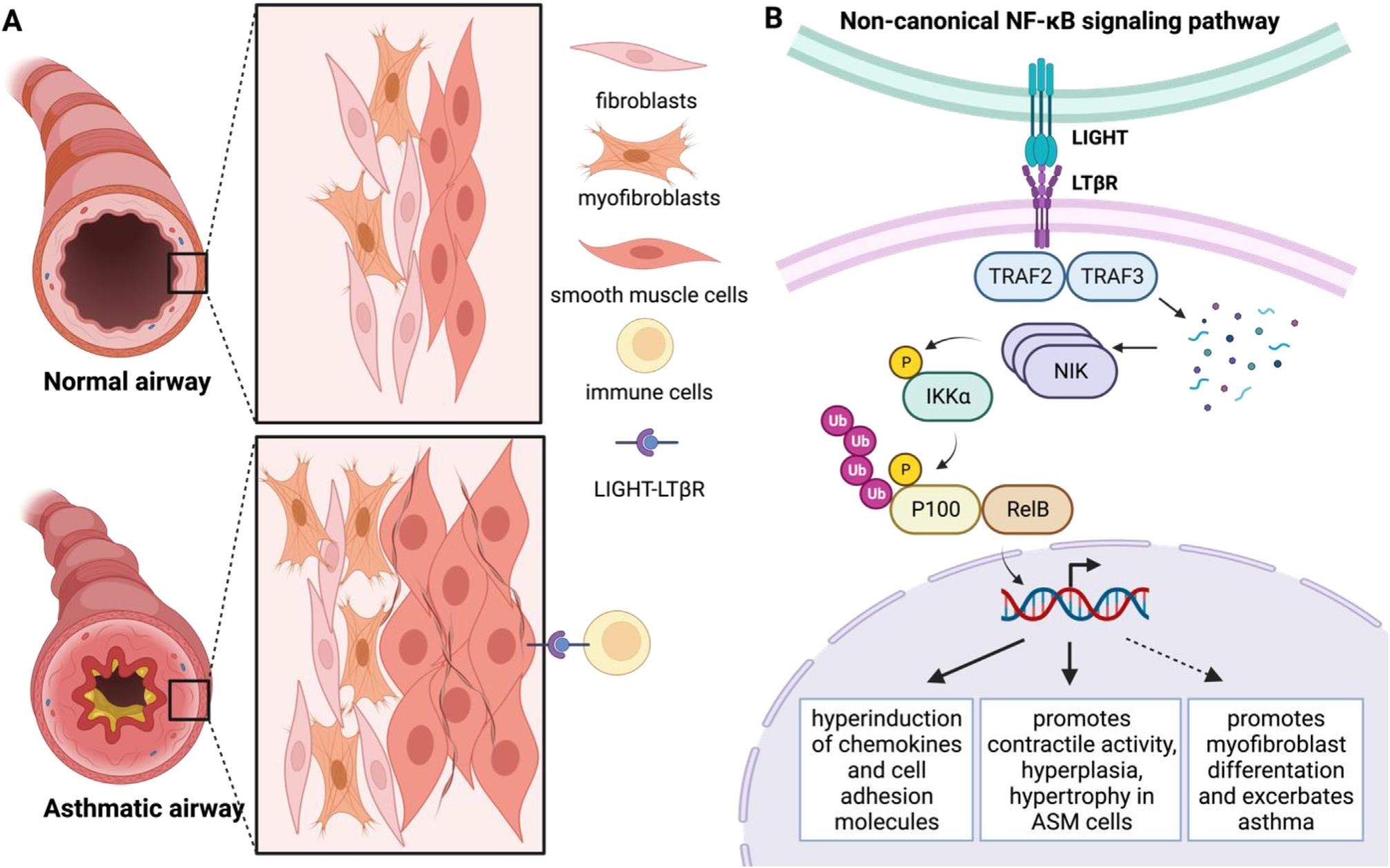
The key piece of the airway remodeling puzzle revealed—LIGHT signaling in the lung


Asthma is a chronic lung disease that primarily affects the lower respiratory tract in more than 300 million people worldwide. Asthma is often triggered by exposure to certain substances or conditions, such as allergens or cold air. The overreaction to the allergens causes inflammation and narrowing of the airway, which leads to episodic or persistent symptoms including shortness of breath, nocturnal cough, chest tightness, and wheezing. The cause of the disease is believed to be a combination of genetic and environmental factors. Asthma can be managed with medications that reduce inflammation and keep the airway open, such as bronchodilators and corticosteroids. However, there is currently no ideal treatment for patients with severe asthma which involves airway remodeling (AR). AR is characterized by long-term modification of the airway structure, including airway smooth muscle hyperplasia, increased inflammatory cell number, and submucosal gland hypertrophy, leading to lung function decline. Thus, understanding the molecular mechanism underlying AR is critical for the development of novel asthma therapeutics.
